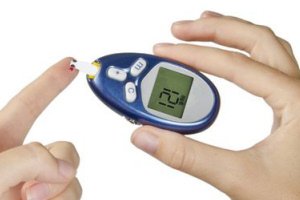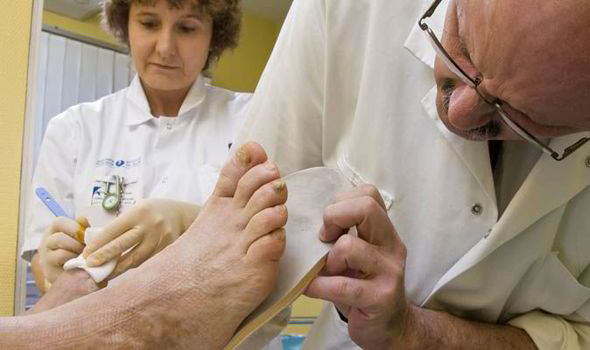Diabetes is a medical condition where there is an excessive amount of glucose in the blood due to the body’s inability to use the glucose properly. Glucose is one of the nutrients gotten from the consumption of carbohydrates. Insulin is a vital hormone which helps in ushering glucose into our body’s cells, thus giving us daily energy. Diabetes occurs in two forms: The type 1, where there is no insulin production by the body, and type 2, a common form of diabetes where the body fails to use or make insulin effectively. When there is no or not enough insulin production, the glucose will be too much in the blood, thereby leading to diabetes.
Can Diabetes Be Cured Permanently?

Unfortunately, diabetes doesn’t have a permanent cure.
1. Type 1 Diabetes
Can type 1 diabetes be cured permanently? Well, the answer still remains no. However, a type 1 patient might experience some improvement in their insulin demand, as sometimes the need for insulin will seem go away, as the blood glucose level stays at a normal rate. This period has been tagged as the “honeymoon period”. This is basically a deceptive stage, whereby a type 1 diabetes patient is without any symptom of diabetes for some months to even a year! Do not be deceived into thinking that you are totally free from the diabetes, as in patients with type 1 diabetes, about 90% of the insulin producing cells are defunct. Eventually, the remaining 10% of these cells will be destroyed and the patient will finally be 100 % dependent on insulin injections. So it is advisable to continue taking insulin shots during the “honeymoon period” in order to preserve the few remaining cells capable of insulin production as long as possible.
2. Type 2 Diabetes
Can type 2 diabetes be cured permanently? Well, type 2 diabetes, like type 1, has no cure and could also be very misleading at times. For example, when an overweight type 2 patient begins to engage in exercise and workouts, they will lose weight and attain a stable blood glucose level. This eventually brings to mind the idea that the diabetes has magically rolled away. Do not let your body trick you into believing that, as type 2 diabetes occurs in stages. For people with type 2 diabetes, the body will either produce less insulin or the body cells will be resistant to insulin. The patient will first be glucose tolerant impaired, and then have full blown diabetes. Type 2 patients are always on alert, as any slight change in their physical activity and weight will result in a double-fold amount of blood glucose, making it impossible to curtail the glucose level with just physical exercise alone. The use of oral medication or injection to maintain a proper and healthy blood glucose level will become inevitable.
How to Get Your Diabetes Under Control
1. Eat Properly

Can diabetes be cured permanently if I eat healthy? This is a commonly asked question among patients with both types 1 and 2. Although, diabetes is a stubborn disease that can’t be permanently weeded out, it can, however, be curtailed by maintaining a healthy diet. Avoid the carbs and instead eat more vegetables, lean meat, diary, nuts and fruits. For proper dieting, eat three meals with healthy in between snacks.
2. Exercise Regularly

Working out is one of the best things a diabetic can do! Doing exercises along with proper dieting and medications will help you maintain a healthy blood glucose level. It is advisable to consult with your physician before embarking on any workout routine, as exercise can significantly drop your glucose level. This is a good thing but you have to make sure that your blood sugar levels are not too low.
3. Follow Your Prescriptions

Can diabetes be cured permanently if you take medications? Although the answer is no, you should also take medications per the doctor's instructions. Be it tablets or insulin shots, make sure you are not skipping them. Medications will help you improve you conditions and prevent your disease from getting worse.
4. Keep Your Blood Glucose Level Monitored

You cannot monitor your blood glucose level with bare eyes, so you will have to use a glucose meter. Using a glucose meter is the best and accurate way to know your blood glucose levels. By this way, you will efficiently make smart decisions about your lifestyle. A glucose level between the ranges of 70 - 130 mg/dL before each meal is recommended.
5. Take the A1c Test Twice Each Year

The A1c test helps in tracking the average blood sugar level your body experienced over 3 months, and it also gives you an overtime clear picture of your blood’s sugar control. It is recommended that you take the A1c test at least twice each year if your blood sugar level stays at a healthy range, however if you change medication or are struggling with maintaining a healthy blood sugar level, a frequent test is advisable.
6. Reduce Stress

When you are under stress, the blood sugar level tends to become hard to curtail. Besides, people with impaired glucose tolerance need about six hours of sleep, and this would not be possible when the body is stressed. So you should try to reduce your stress levels. You could engage in some relaxation techniques like yoga, meditation, tai-chi, relaxing massages and music to calm your nerves and keep the stress at bay.
7. Know Carbohydrate Portion Size and Counting

Managing diabetes is not easy, and this is why insight on carbohydrates counting is needed. Carbohydrates can affect blood sugar levels greatly. Those who are taking insulin during mealtime will have to know the amount of carbohydrates in their food servings as this will let them know the appropriate insulin dosage. Be aware of what size is okay for each meal you take. Track this by writing down the portions of meals you eat daily and also use measuring cups to keep track of each carbohydrate count.
8. Regular Foot and Eye Checkups

Can diabetes be cured permanently? Now you know the answer. It is, therefore, important to pay attention to complications related to diabetes. Damaged nerves and improper circulation (eyes and foot mostly) are among the complications, which can eventually lead to blindness and loss of foot function. This affects both type 1 and type 2 diabetes patients. Therefore, regular foot and eye checkups are necessary.
- A comprehensive dilated eye exam should be scheduled once every year in order to check for any vision loss due to diabetes. However, pregnant women and individuals who have other illness should go for this test more frequently.
- Foot ulcers, sores and pulse should be checked once every year. However, patients with previous records of foot ulcers are advised to go for foot checks once every three months.
